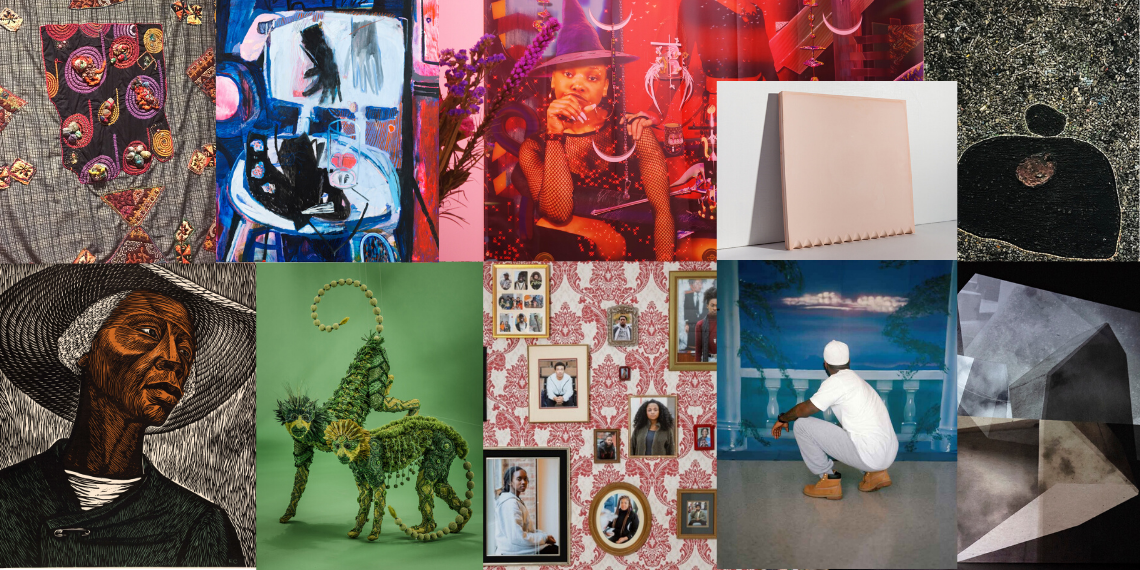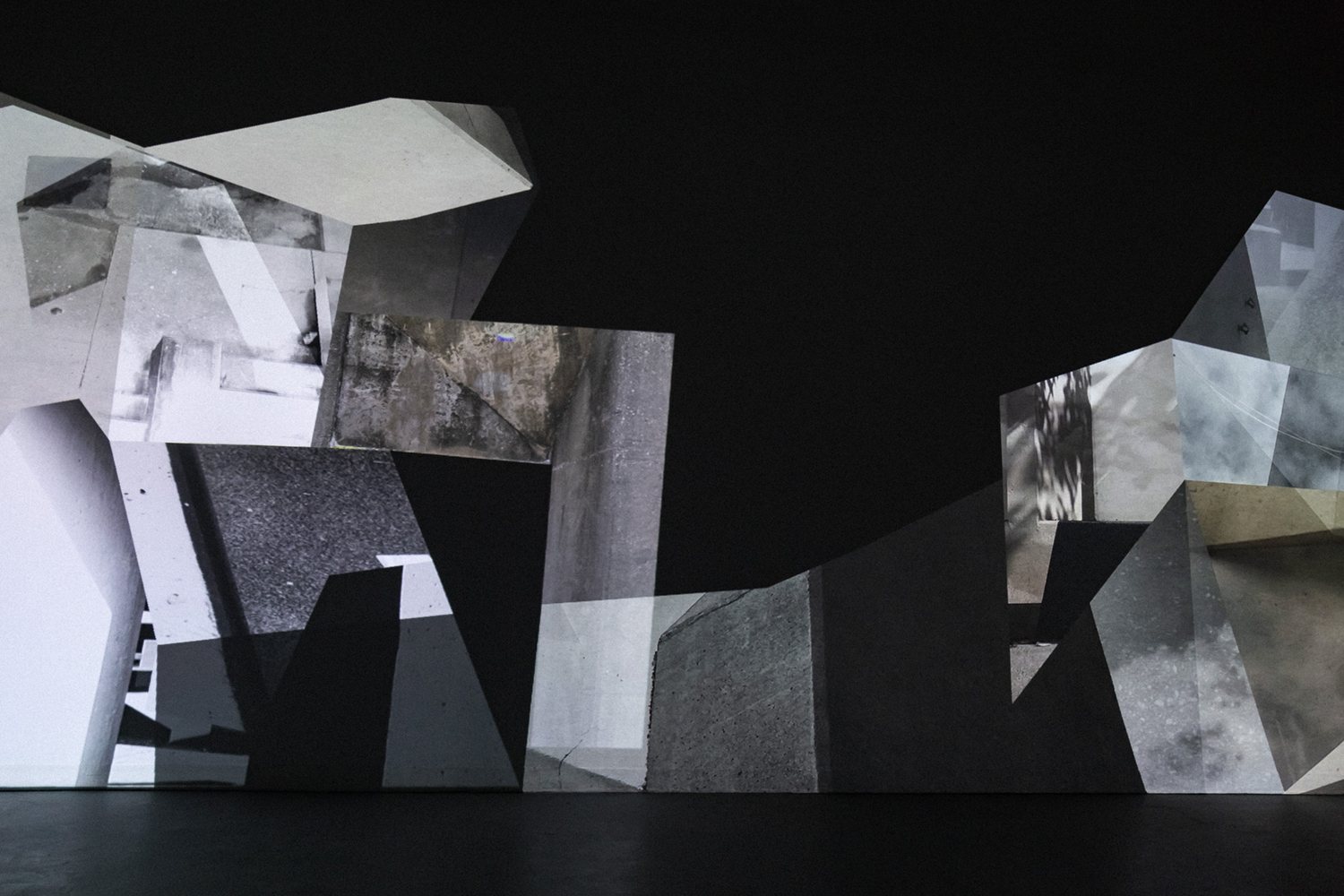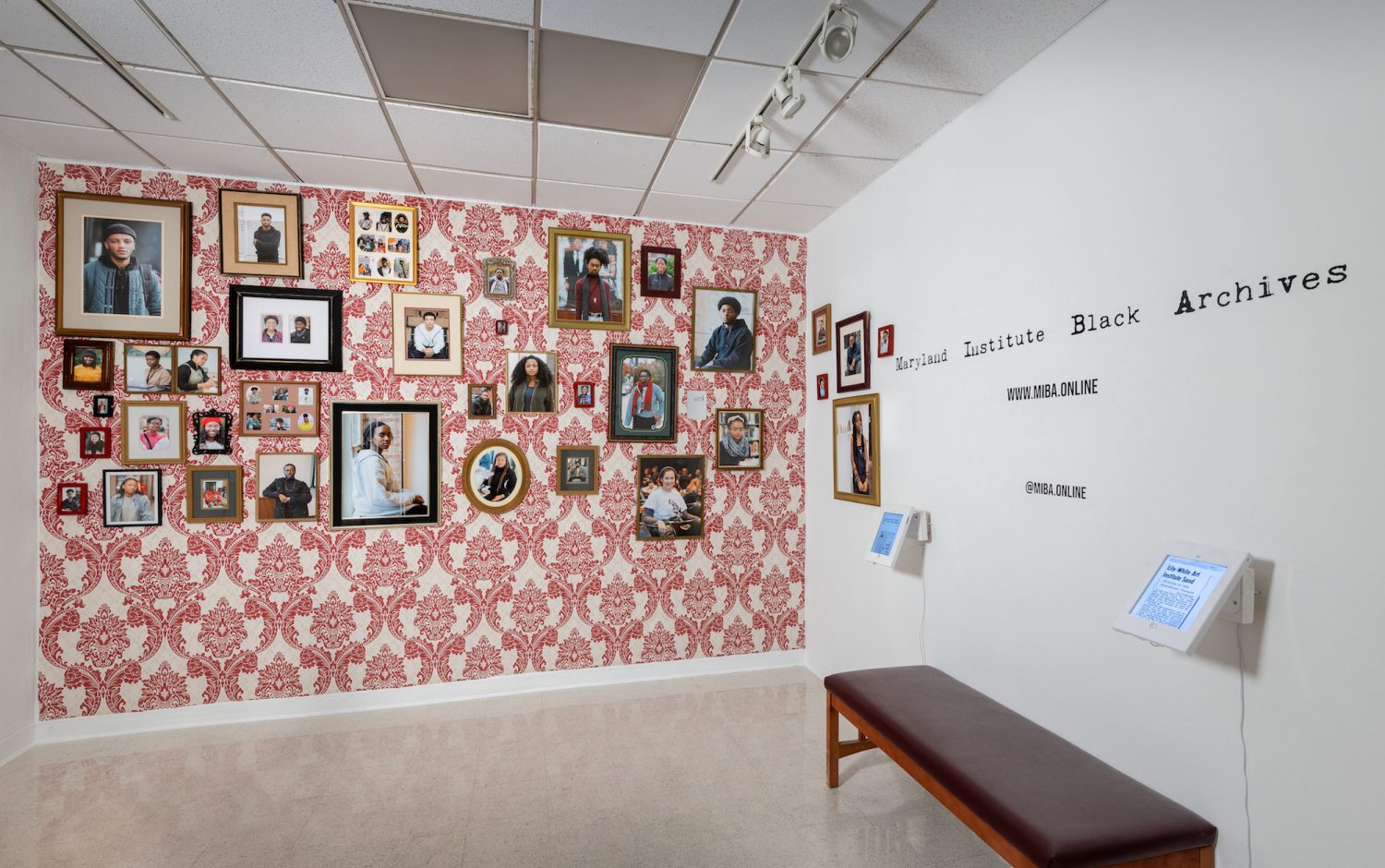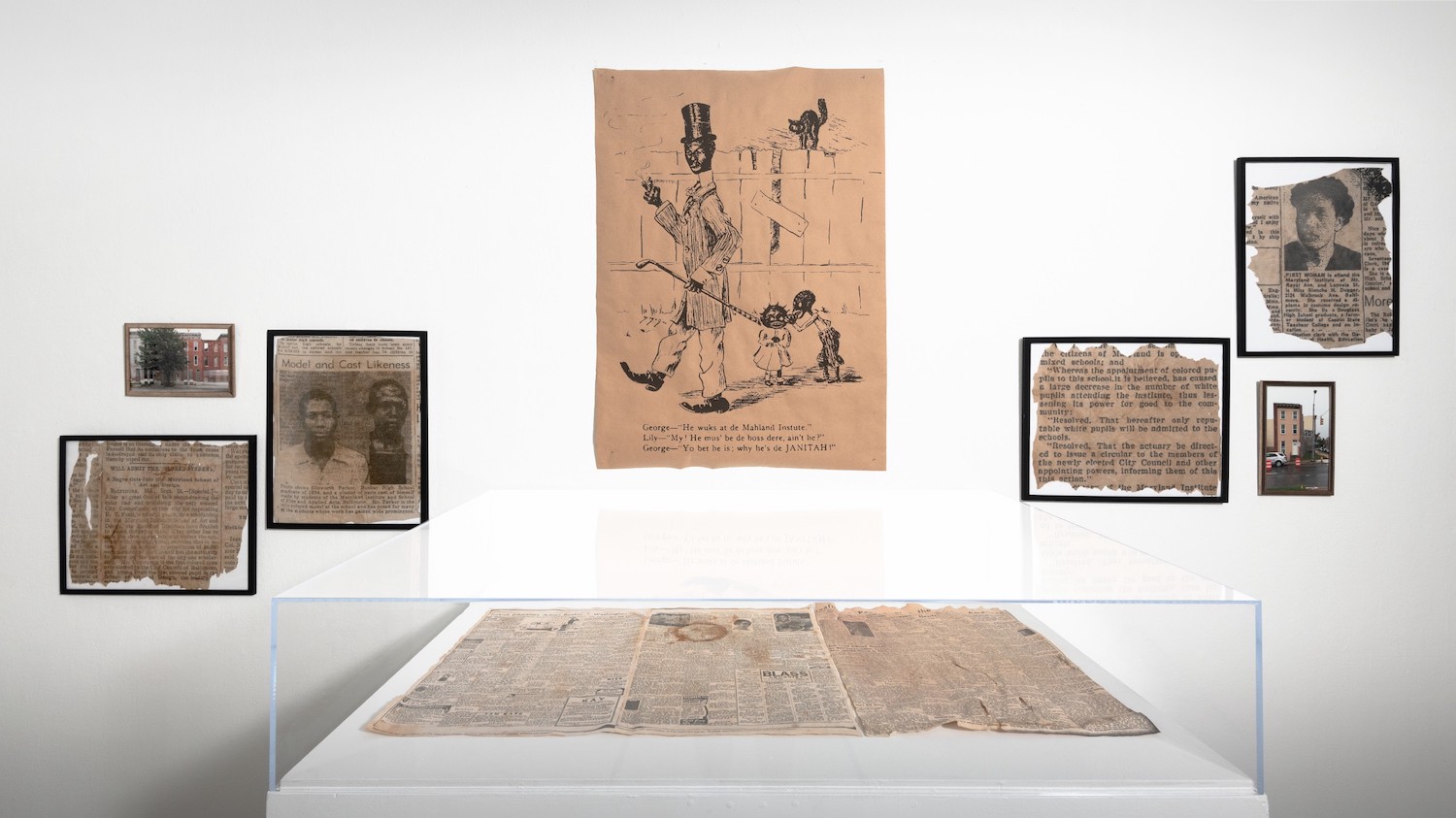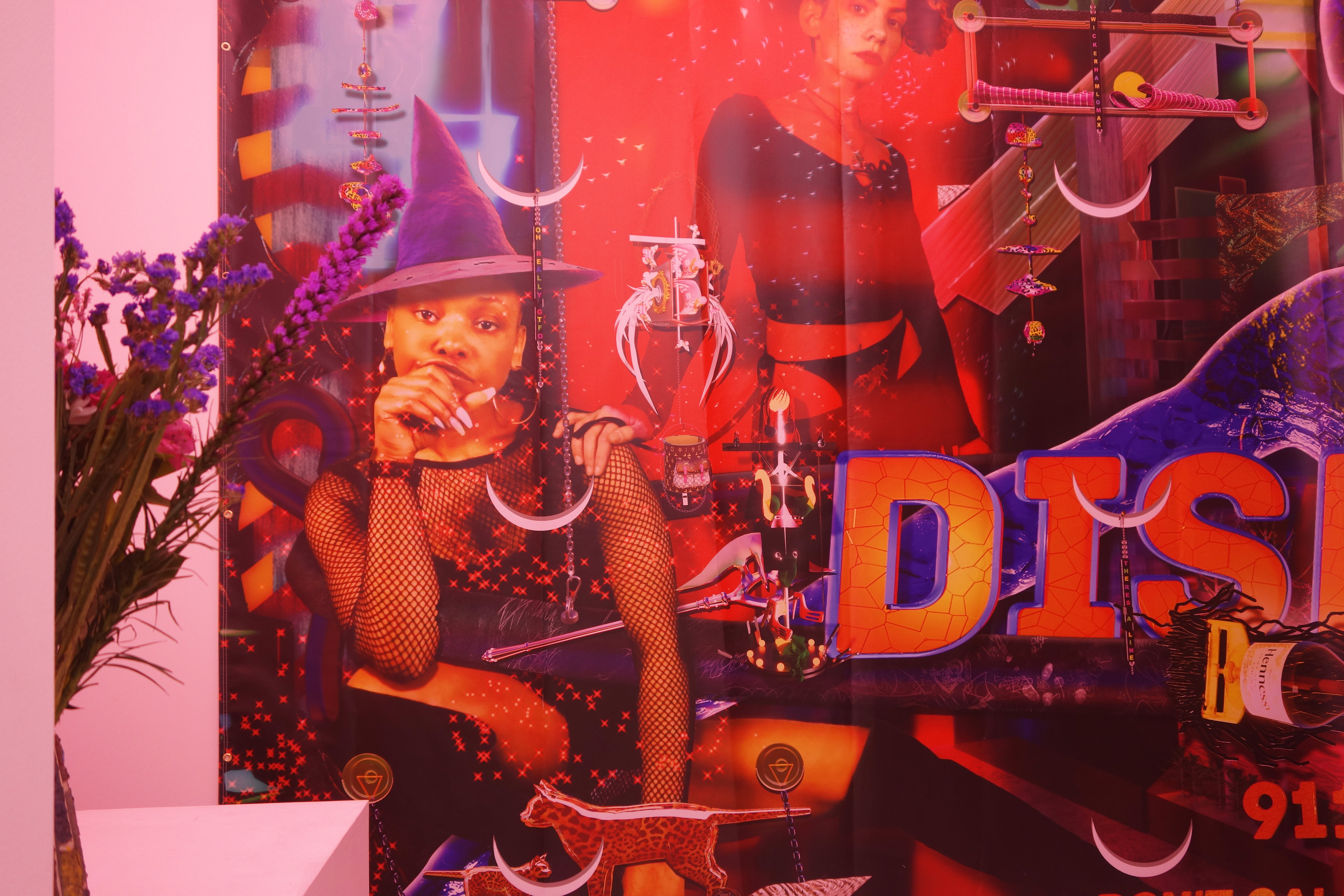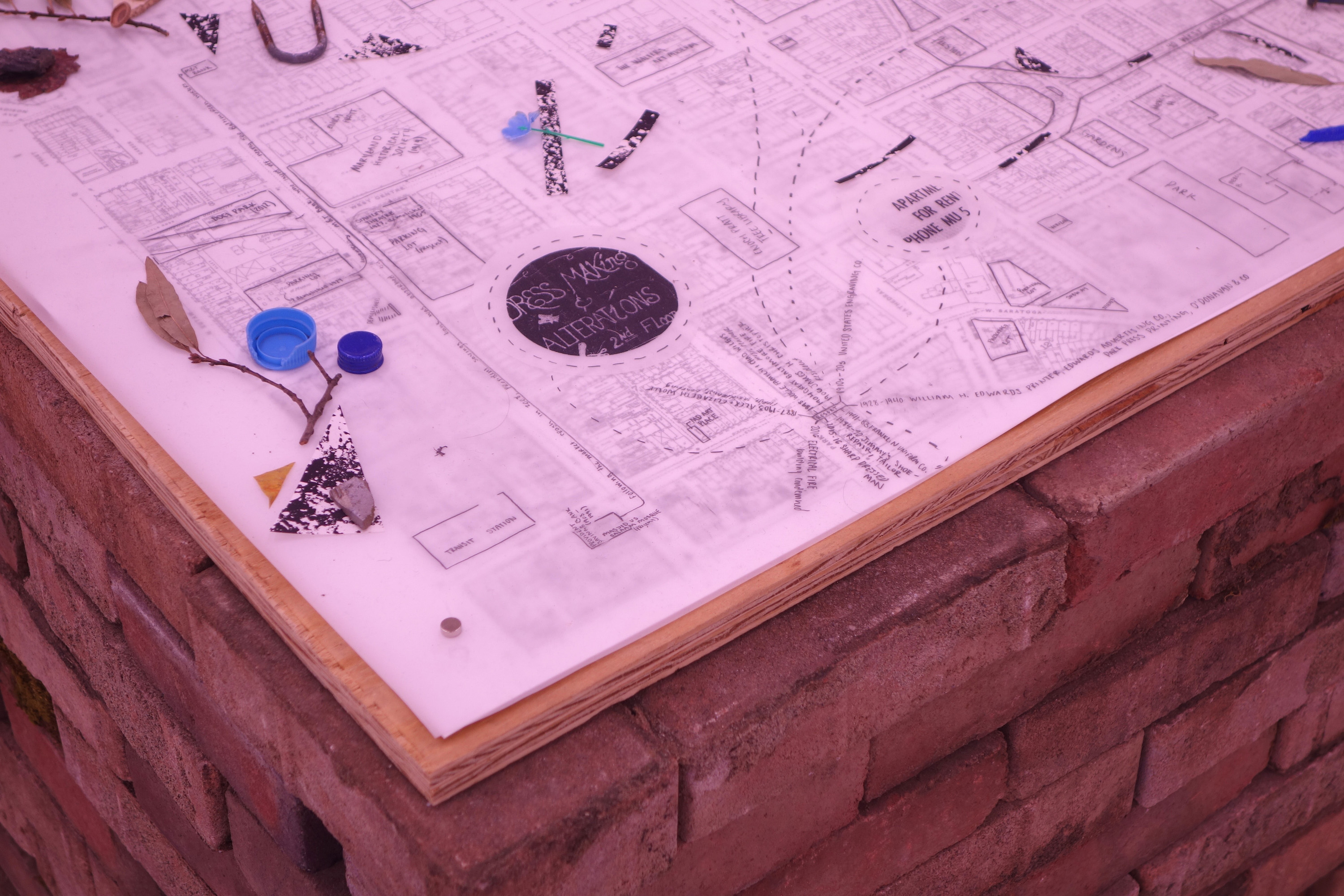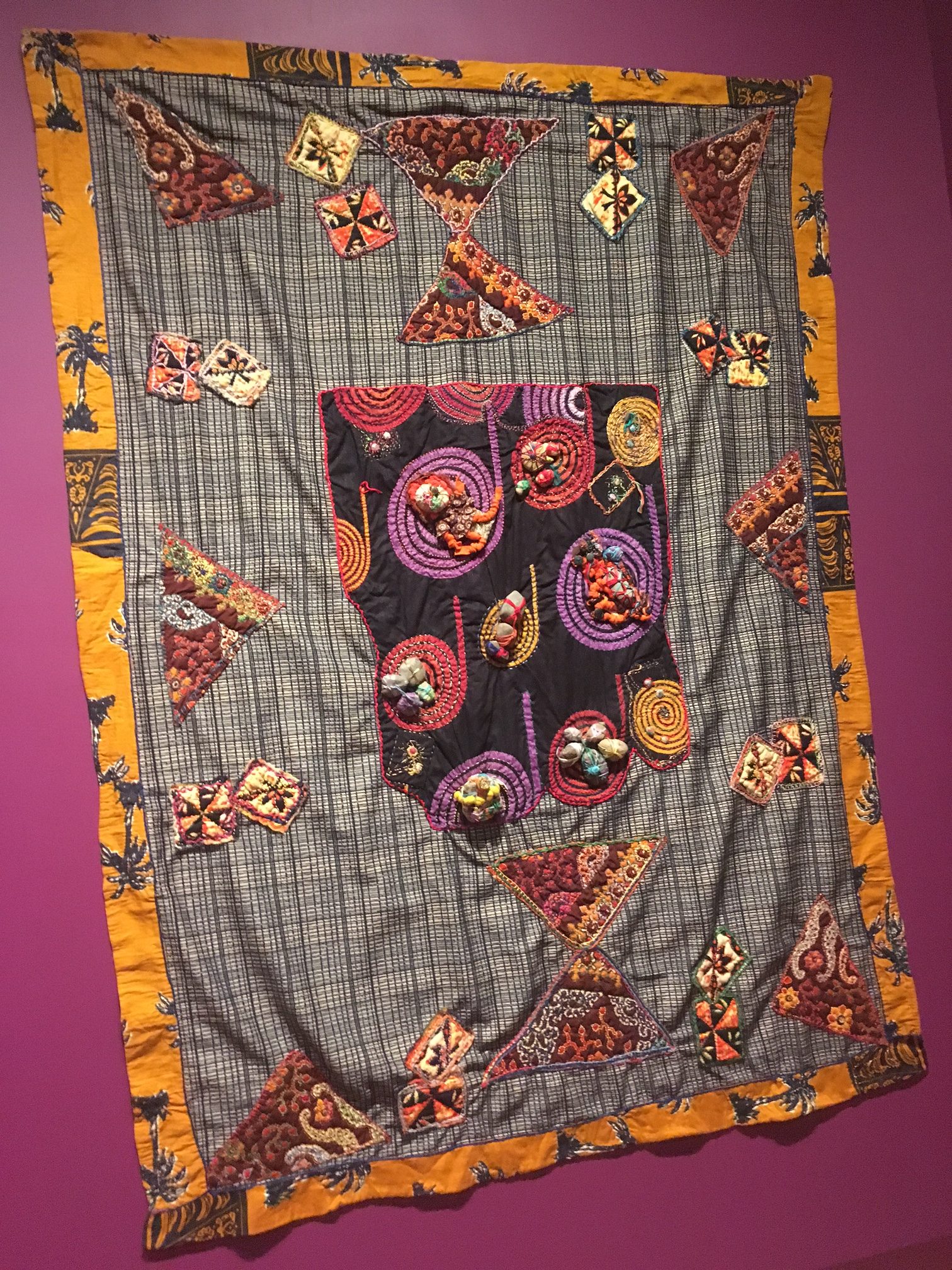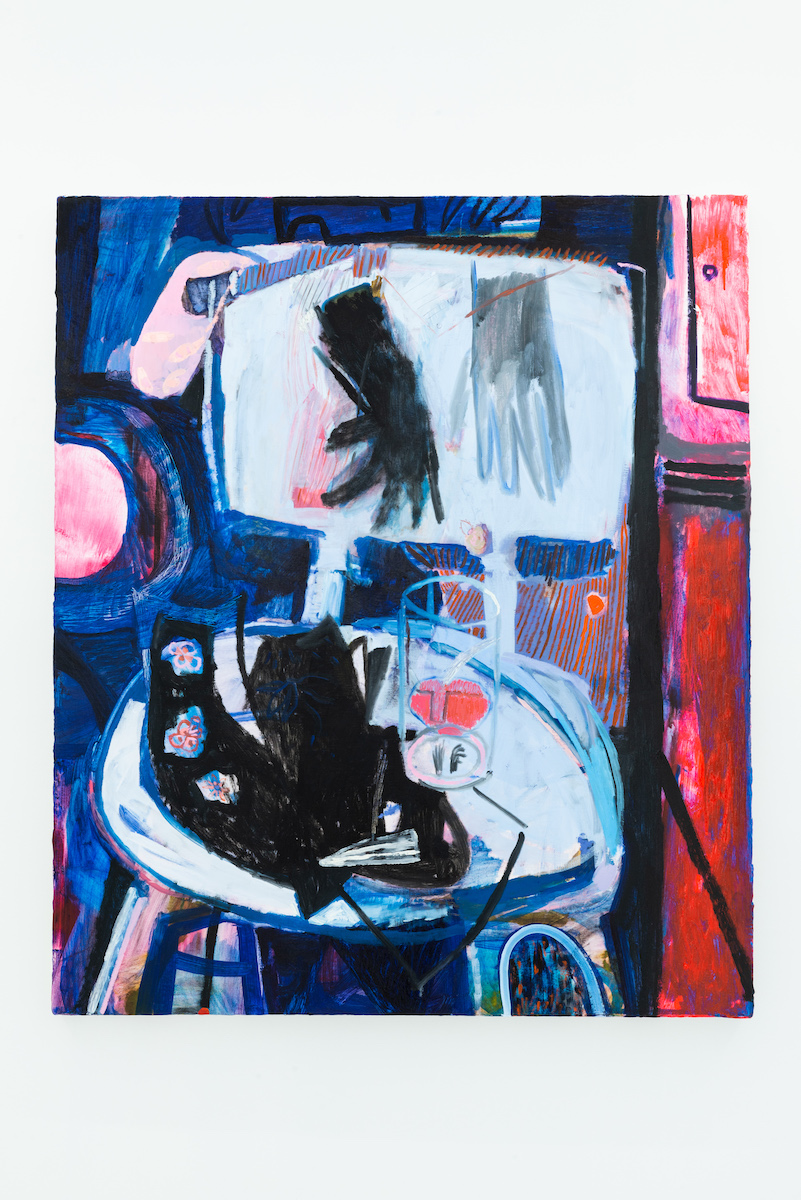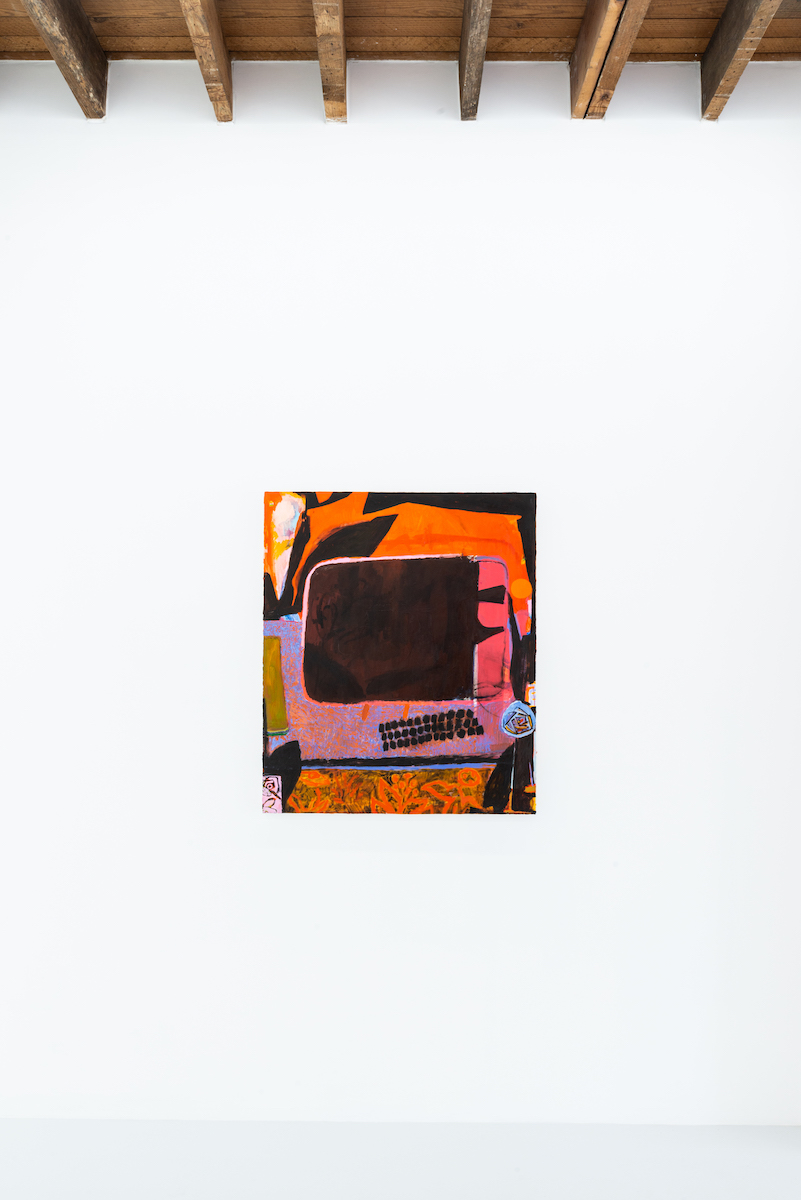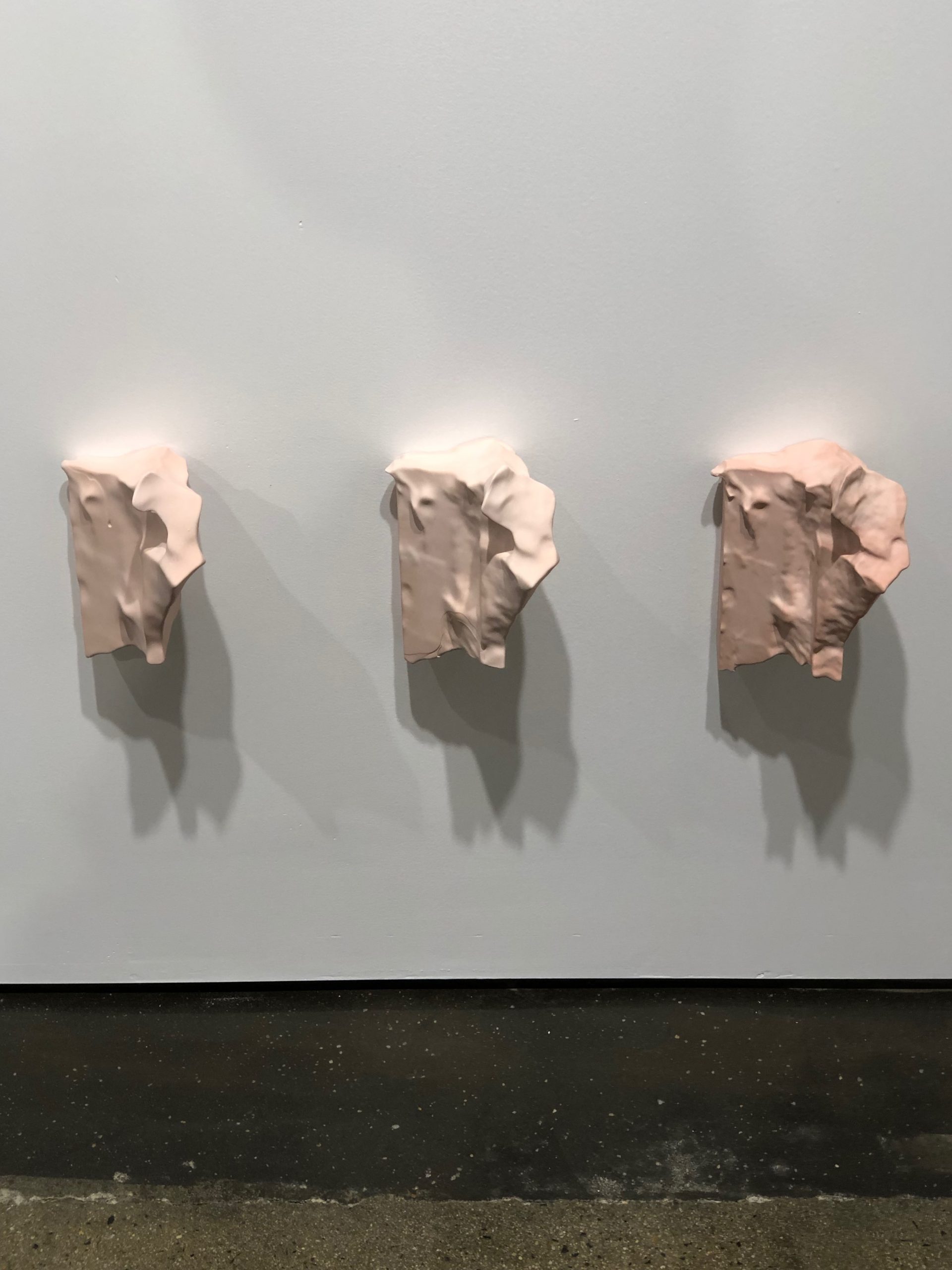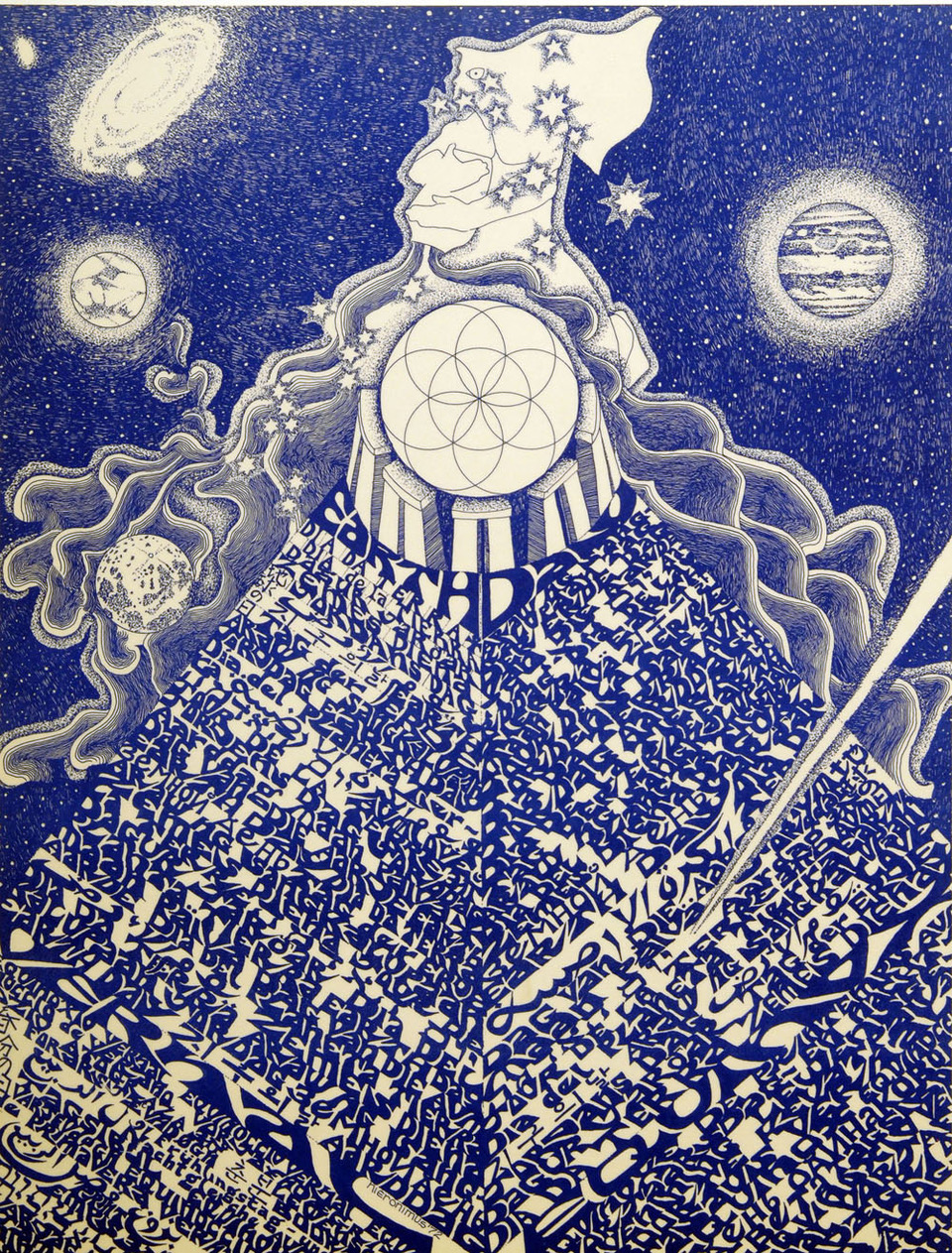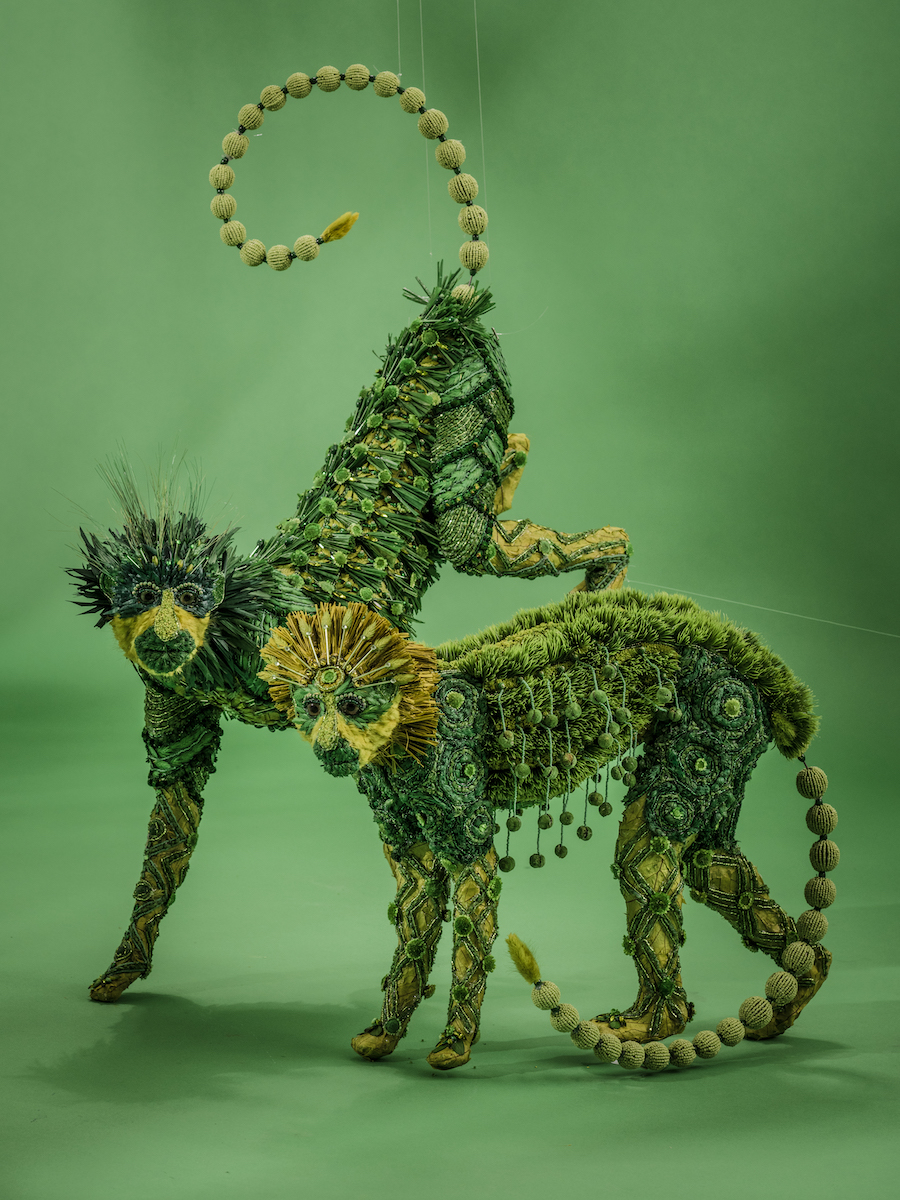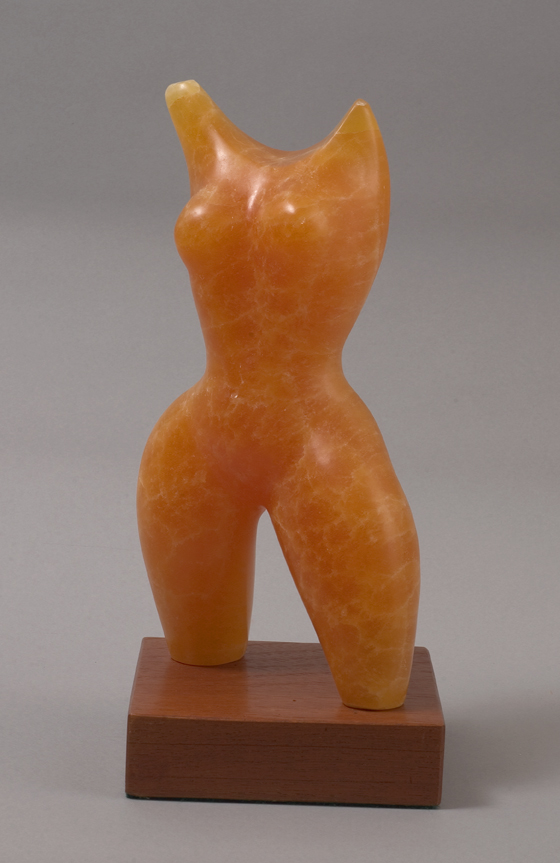The best Baltimore art exhibitions of 2019 looked backward and forward, often simultaneously, probing current and past sociopolitical concerns as well as our increasingly foreboding environmental climate. Artists such as Deyane Moses and Nicole Ringel dug—in some cases, quite literally—into the ground upon which they stood and into the archives, pulling up and putting on display a major educational institution’s racist legacy (in the case of Moses’ work) and the chaotic pace of downtown Baltimore’s development and the parabolic broader implications of such change (in Ringel’s work), varyingly intense and bold, subtle and implicit. In two concurrent shows that opened this spring, curators Amy Eva Raehse (Goya Contemporary) and Cecilia Wichmann (BMA) considered legacy, inheritance, and the mother-daughter relationship as they brought together the art of Joyce J. Scott and her late mother Elizabeth Talford Scott. And then, this fall, the BMA brought in a massive exhibition to showcase the long-extant and ongoing profundity of abstract art by several generations of Black artists, many challenging the common conception of what “abstraction” can mean or what it is for. Experiential, immersive installations also stuck in our minds all year—even a few paintings exuded a similar quality, like Ryan Syrell’s, their scale and vivid colors fixing us in a trance while almost transporting us elsewhere.
It was, in short, another good year for Baltimore’s visual art scene and we’re eager to see where we wind up next year. Instead of a qualitative ranking from one to 10, we listed these shows in chronological order. Read on for BmoreArt staff and contributors’ thoughts on the 10 best exhibitions of 2019.
1. Shannon Collis & Liz Donadio: Singular Space at ICA Baltimore
January 5–26, 2019

Installation views of Singular Space at ICA Baltimore
In this memorably immersive, moody cavern of an exhibition, Liz Donadio and Shannon Collis created an exploratory ode the built environment and its inextricable tie to our own bodies and behaviors. “Like the best monuments, Singular Space offers a complete sensual experience, engaging equally with body and mind, and your rapt attention is rewarded through every sense available except for smell, which could be an interesting addition,” writes Cara Ober. “Composed of photos, video, and audio created at Miles Stafford Ralph’s 1975 Forum Fountain, a rundown Brutalist-inspired public sculpture located behind Paul Laurence Dunbar High School in East Baltimore, Singular Space functions like a monument to a monument, successful because it is fluent in the language of monumentality.”
2. Deyane Moses: Blackives at Maryland Institute College of Art’s Pinkard Gallery
January 28–February 22, 2019

Installation views of Blackives at MICA
Deyane Moses, a recent MICA Photography graduate and current Curatorial Practice MFA student, earned national headlines at the start of this year for her on-campus exhibition Blackives and her expansive online platform, the Maryland Institute Black Archives, which scoured archival sources for information about the school’s racist history, including a policy from 1895 to 1954 that explicitly excluded students who weren’t white.
The exhibition, which I wrote about in February before it was remounted elsewhere on campus twice, featured “reproductions of archival photographs and newspaper clippings, along with photos of current students, to ‘revive the voices’ of black artists who have been systematically silenced and denied entry into the institution.” You can’t delve into the past without considering its reverberations in the present, though, so Moses also collected oral histories and photographic portraits of Black artists, instructors, administrators, and other current staff members at MICA. The project “struck a chord with MICA President Sammy Hoi, who pointed to Moses’ work in a memo released to students, faculty, and alumni to apologize for the institution’s racism,” specifically for that egregious policy of exclusion. As part of the overdue apology, the institution announced a more robust diversity, equity, and inclusion plan. Time will tell how that plays out. Amplifying the experiences and stories of people at her own college, Moses takes on a global problem from a local setting, letting audiences grapple with a hideous, honest legacy while also uplifting the school’s current Black community.
3. A Gentle Excavation at Resort
March 29–May 4, 2019

Wickerham & Lomax (L) and Nicole Ringel (R) in A Gentle Excavation at Resort
Excavating, digging, reckoning, archiving—these labors are always necessary and seem increasingly at the forefront culturally as we try to understand the present. This group exhibition, curated by MICA Curatorial Practice MFA graduate Allie Linn, offered poetic and sideways sensory explorations of a place. Lu Zhang’s vacuum-sealed food and supplies from a nearby grocery store (coffee, spices, ramen noodles, honey straws, among others) prompted questions about future disaster. Flowers that seemed to bloom from the walls in agustine zeger’s “Promised Body” referenced the beauty of nature’s quick consumption of abandoned buildings. And, the gallery itself (along with its past lives), became a crucial part of the show, bathed in a baby pink light that was so subtle in person that you could easily almost have missed it. As Rahne Alexander wrote about it in her review, “An awning for Sharp Dressed Man, a prior building tenant, still crowns the entranceway, providing a clever disguise for the gallery and serving as a readymade addition to Linn’s curatorial vision.”
4. Elizabeth Talford Scott & Joyce J. Scott: Reality, Times Two at Goya Contemporary & Hitching Their Dreams to Untamed Stars at the Baltimore Museum of Art
May 10–July 31, 2019 & May 15–December 1, 2019

Joyce J. Scott, “Gun Woman” on view in Reality, Times Two at Goya Contemporary and Elizabeth Talford Scott, “Hourglass” on view in Hitching Their Dreams to Untamed Stars at BMA
If you’ve ever spent, at minimum, 30 seconds in the presence of Joyce J. Scott you know she can tell a good story. Spend some time with her art and it’ll reveal something too. These two exhibitions presented art by Joyce and her mother, Elizabeth Talford Scott—both of whom employ somewhat unconventional “art” materials such as beads, fabric, thread, and found objects. For decades, Joyce and Mother Scott worked side by side in their home studio in West Baltimore, and the influence of one artist on the other is undeniable, while their visual storytelling remained specific and unique. Both of these shows, as I wrote in July, crafted “a loose narrative of making something—in community with others, often out of on-hand materials, with excellent craftsmanship—because it needs to exist, because its critical engagement can benefit the world, at least as the first drop in a ripple.” And although it would have been easy for such a narrative to fall into Hallmark-like sweetness, the shows edified the mother-daughter relationship as a worthy subject, for all of its intellectual and emotional possibility. “Working side by side was a kind of history-making on its own, infusing both artists’ work with histories and memories, sewn with intention.”
5. Ryan Syrell: Book of Flowers at Springsteen
June 8–August 17, 2019

Ryan Syrell, “Flower Guide” and “Monitor (Sunset)”
Despite an economical use of bright color, studied gestures that deceptively appear quick and free on large canvases, and apparent references to great modernist painting, Ryan Syrell’s paintings are firmly grounded in the present, toying with the backlit screens and ephemeral imagery that inform our experiences of spaces and places. In a review, Michael Anthony Farley described the experience of not simply viewing these paintings but “watching” them. Encountering the painting “Vagabond,” Farley and a friend were seduced up close by the painting’s color and strokes that guide the eye around the canvas. Stepping back, the “what” of the image started to come together for them: “’Oh wait! It’s a projector! And that’s a laptop! Wait! Are they watching porn on a projector?!’ (Embarrassingly, I’m the one who directs this question to the artist. It turns out it’s a scene from Agnes Varda’s Vagabond.)”
6. Nick Primo & Hae Won Sohn: Vice Versa at Mono Practice
June 27–July 27, 2019

7. Generations: A History of Black Abstract Art at the Baltimore Museum of Art
September 29, 2019–January 19, 2020

L: Kevin Beasley, “Chair of the Ministers of Defense” and R: Jack Whitten, “Black Monolith X, Birth of Muhammad Ali.” Above (L-R): Julie Mehretu, “Fever Graph (algorithm for serendipity)”; Martin Puryear, “Lever #2”; Jack Whitten, “9.11.01″
Generations: A History of Black Abstract Art exhibits more than 70 paintings, sculptures, and mixed-media installations by a combination of celebrated and lesser-known Black abstract artists, including Kevin Beasley, Mark Bradford, Sam Gilliam, Jennie C. Jones, Norman Lewis, Lorna Simpson, and Alma W. Thomas. Presenting works from the Joyner/Giuffrida Collection of Abstract Art and the BMA’s collection, Generations explores “the materiality of abstraction as a dialectic on freedom,” writes Angela N. Carroll in our review of the show. “The ceaseless interplay of color and form, context and subject, medium and technique, deepens critical engagement with the complexity of Black abstractions. Each work is a defiant rebuttal to historically limited characterizations about the concepts Black artists have been expected to resolve explicitly through folk art and figuration. Abstraction has been documented as a prospect of brooding white masculine genius. This collection revises art history by dismantling, decolonizing, and rightfully chronicling abstraction.”
8. The Secret Life of Earth: Alive! Awake! (and Possibly Really Angry!) at the American Visionary Art Museum
October 5, 2019–September 6, 2020

Robert Hieronimus, “Poster for the first Earth Day” and Johanna Burke, “Green Monkeys”
It was a foreboding one-hundred degrees or so at the early October press preview for the AVAM’s newest sprawling exhibition of works that explore the power and fragility of nature and ecosystems in light of the climate crisis. In BmoreArt’s review of the exhibition, Michael Anthony Farley pondered generational clashes among Boomers and Millennials, whether “one generation’s proclivity towards cynicism and another’s penchant for magical thinking are symptoms of the same ailment. Are both a defense mechanism against the fear and utter despair of living on a dying planet? A psychic callous between ourselves and the antimony of life in late capitalist America: that we are all on some level complicit in environmental devastation while mostly powerless to stop it?” Farley embraces the emotionality of climate change’s impact on culture, which remains under-explored, and mentions Bobby Adams’ installation “What’s Cooking?”: “Made just for this show, it comprises a vintage midcentury stove that’s literally ‘cooking’ the Earth,” Farley writes. “It’s an awkward art object that is honest about reality while acknowledging its own uncertainty over its own function. It’s an alarm, and memorial, and maybe call to action.”
9. Elizabeth Catlett: Artist as Activist at Reginald F. Lewis Museum
October 26, 2019–March 1, 2020

Elizabeth Catlett, L: “Chile II,” linocut (1980) and R: “Nude Torso,” orange onyx. Above: “Madonna,” lithography (1982)
This major, dynamic exhibition of prints and sculptures by Elizabeth Catlett, curated by Jackie Copeland, valorizes laborers of many stripes—from sharecroppers to abolitionist heroes to parents and grandparents, all with a strong emphasis on women. Born 1915 in DC, Catlett moved to Mexico in 1946 to work with the antifascist/pro-labor print workshop Taller de Gráfica Popular, whose belief in art’s power for social justice was formative for the artist. Catlett eventually became a dual citizen of the US and considered herself both African American and Mexican and made work that reflected all of her intersecting identities.
In Catlett’s style, women are often shown as both tough and soft, with hard-edged features giving way to the gentlest curves (or vice versa). Her figure and portrait sculptures flow with a similar tension, referencing her varied aesthetic influences including African sculpture and modernism. Catlett’s print portraits of mothers and grandmothers and children in this exhibition help elucidate the reason for that protective/loving duality, uplifting the labor of the caregiver as much as she does the field worker. As we wrap up a chaotic decade and enter into a new one, bringing with us all the labor concerns of yore and everyone proclaiming 2020 as the “year of the woman,” Catlett’s art is particularly resonant and galvanizing from where we sit, perhaps on the cusp of major change.
10. Larry Cook: Eternal Splendor at Galerie Myrtis
November 9, 2019–January 25, 2020

 Larry Cook, from the Urban Landscapes series, digital prints (2018)
Larry Cook, from the Urban Landscapes series, digital prints (2018)
In Urban Landscapes, the artist (and former party photographer) Larry Cook took photographs of airbrushed photo-backdrops set up against bucolic landscapes around Martha’s Vineyard, “that summertime bastion of a certain kind of New England Old Money who pride themselves on an ostentatiously discrete approach to being obscenely wealthy,” writes Michael Anthony Farley. The series is full of formal and figurative tensions—the ersatz and the real, “the countryside as commodity”—made even more complicated and profound in this exhibition along with Cook’s related series The Visiting Room, in which prisoners (all of them Black men) face the backdrops “representing some fantasy trope of freedom, wealth, and power in the American psyche—the luxury sedan or the pre-9/11 Manhattan skyline.” In his review, Farley wondered about those who summer at Martha’s Vineyard who profit “either directly or through unconsidered mutual funds” from the prison-industrial complex. “Or how many clinked glasses with the Clintons or Kennedys in support of escalating the War on Drugs or the land-grab Hope VI, involving the armed mass-eviction of Black families from public housing and into disputed gang turf. Even those who dutifully ostracized Trump supporters from the island’s polite society?”
Featured image (L-R): (top) Elizabeth Talford Scott, Ryan Syrell, Wickerham & Lomax, Hae Won Sohn, Jack Whitten (bottom) Elizabeth Catlett, Johanna Burke, Deyane Moses, Larry Cook, Shannon Collis & Liz Donadio
See original reviews for individual image credits. Elizabeth Catlett images courtesy of the Reginald F. Lewis Museum. Vice Versa images by Suzy Kopf.


